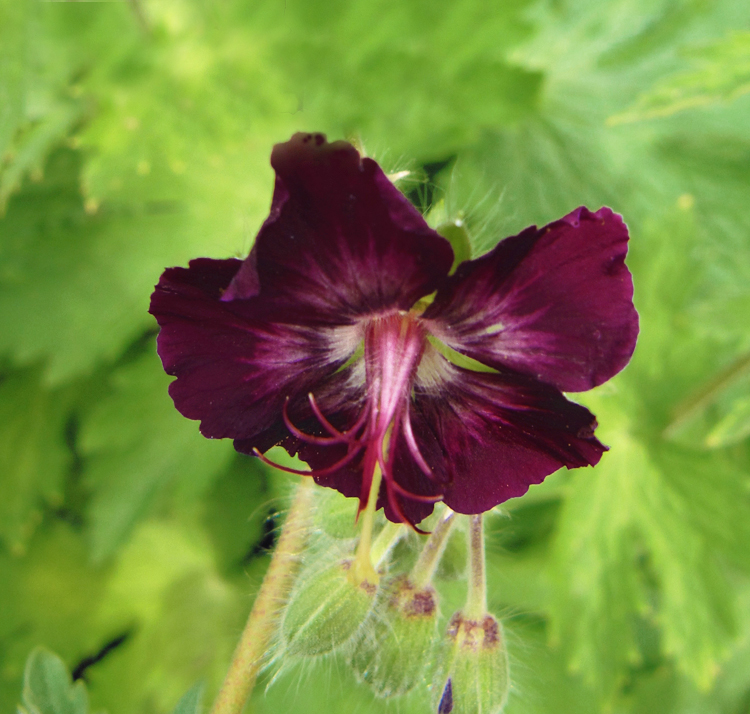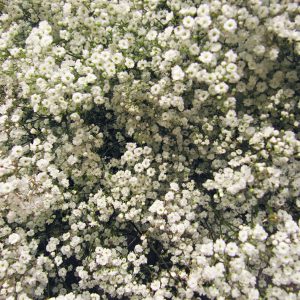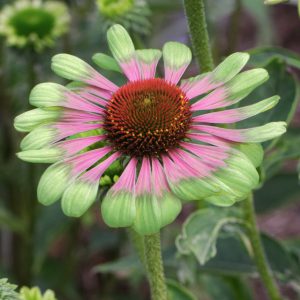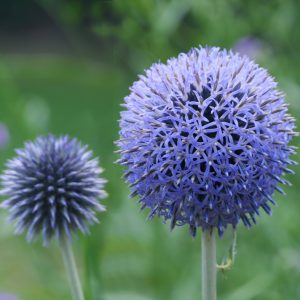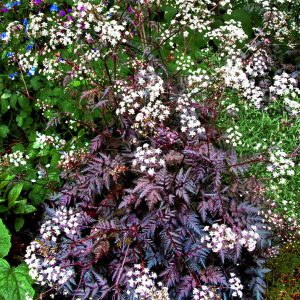- 1-9 pkts $4.50
- 10 pkts FREE
- Express post $12
Geranium phaeum
MOURNING WIDOW CRANESBILL
Geranium phaeum gains the common name of “Mourning Widow Cranesbill” because of the deep, dark, almost-black, burgundy flowers.
Deep, dark, almost-black, burgundy flowers
Tall stems hold sprays of pretty round discs of almost-black, velvety flowers.
Held high and proud above a dense mound of evergreen rounded foliage.
With the petals swept back from the stamen in classic cranesbill fashion – exposing a prominent lavender beak.
Decorative evergreen foliage clump
Geranium phaeum is jolly useful for its decorative, evergreen, rounded pudding of a foliage clump too. It is not just a pretty flower.
Leaves are velvety, rounded and scalloped, and form the neatest clump to decorate a difficult shaded area all year round.
Long blooming & pretty all year round
Tough little Geranium phaeum blooms all through summer and autumn.
With repeating sprays of flowers on long, elegant stems.
That seem to float above the velvety foliage mound.
Indispensable for dry shaded areas under trees & shrubs
Where ever I have a difficult spot under trees and shrubs – where it is too shaded for most flowering plants, or too dry for all but the toughest – I can always rely on good old Geranium phaeum to fill the spot and put up a good fight against adversity.
So it is excellent for planting in shaded areas such as under large deciduous trees, or beside buildings.
Where it positively thrives in full shade that has some reflected light, or dappled light and shade.
Water-wise & frost hardy
Geranium phaeum is an evergreen, tough and hardy perennial.
It is a water-wise plant once established – thriving on average to minimal watering, especially if mulched under trees and shrubs.
And it has excellent frost resistance.
Resistant to rabbits, deer, slugs and snails
Nothing seems to chew on Geranium phaeum for preference.
So they usually retain their neat, pudding shape foliage clump without blemishes.
Low maintenance
Time-poor gardeners find Geranium phaeum very useful for shaded areas.
As it does not need dead-heading or pruning to remain neat, and it thrives on a minimum of attention.
Bees & busy pollinators love the flowers
Bees and other busy pollinators love the nectar rich flowers, while our chewing foes like rabbits and snails leave them alone.
SEED SOWING ADVICE: Germinates in the cool
Seeds are best sown in autumn or winter, to use the cold of winter for germination.
Sow seed indoors in a punnet for quicker response: First sow the seeds in a punnet on the surface of good quality seed raising mix.
Then cover the seeds only lightly with fine sieved seed mix or fine vermiculite.
Now thoroughly moisten the punnet by standing it in a shallow water bath, and allowing the moisture to percolate up to the surface of the mix from below. This will ensure the mix is thoroughly moist but not drenched.
Label the punnet with the name and date sown.
Seeds love the winter cold
Now wrap the moist, sown punnet in cling-wrap or a plastic bag, and place in the fridge (not freezer) for 6-8 weeks.
This will mimic winter nicely.
Then remove, unwrap, re-moisten and place in a cool, but well-lit position (but with no direct sunlight).
Because temperatures of approx. 10-15°C are best for optimum germination.
So timing your sowing to best use the cool weather is important.
Continue to keep the punnet consistently moist by misting from a spray water bottle regularly.
Covering the punnet with a clear plastic cover, plastic bag, or glass helps to maintain consistent moisture and prevent drying out.
Remove the cover once germination has started
If you need to place the punnet outdoors for cool temperatures – then make sure you cover the punnet with wire or shade cloth so the seeds are protected from birds and mice.
The seeds will not mind cold nights.
Seeds begin to germinate in approx. 30 days.
But do not throw out the punnet too quickly, as it is natural for these seeds to germinate irregularly over a period of time during cold weather. Patience.
Direct sow in the garden: Or sow seeds directly in the garden in autumn and leave to get the required chilling from winter and nature, before they germinate in the spring.
Seed Count: 8 seeds per packet approx. (Seed of this beauty is scarce)
Click here for Nursery Open Days & Open Gardens Information
https://www.gardivalia.com.au/open-gardens
Click here to go back to Seeds Shop
https://www.seedscape.net.au/shop/
Related products
-
Add to WishlistAlready In WishlistAdd to Wishlist
-
Add to WishlistAlready In WishlistAdd to Wishlist
-
Add to WishlistAlready In WishlistAdd to Wishlist
-
Add to WishlistAlready In WishlistAdd to Wishlist

